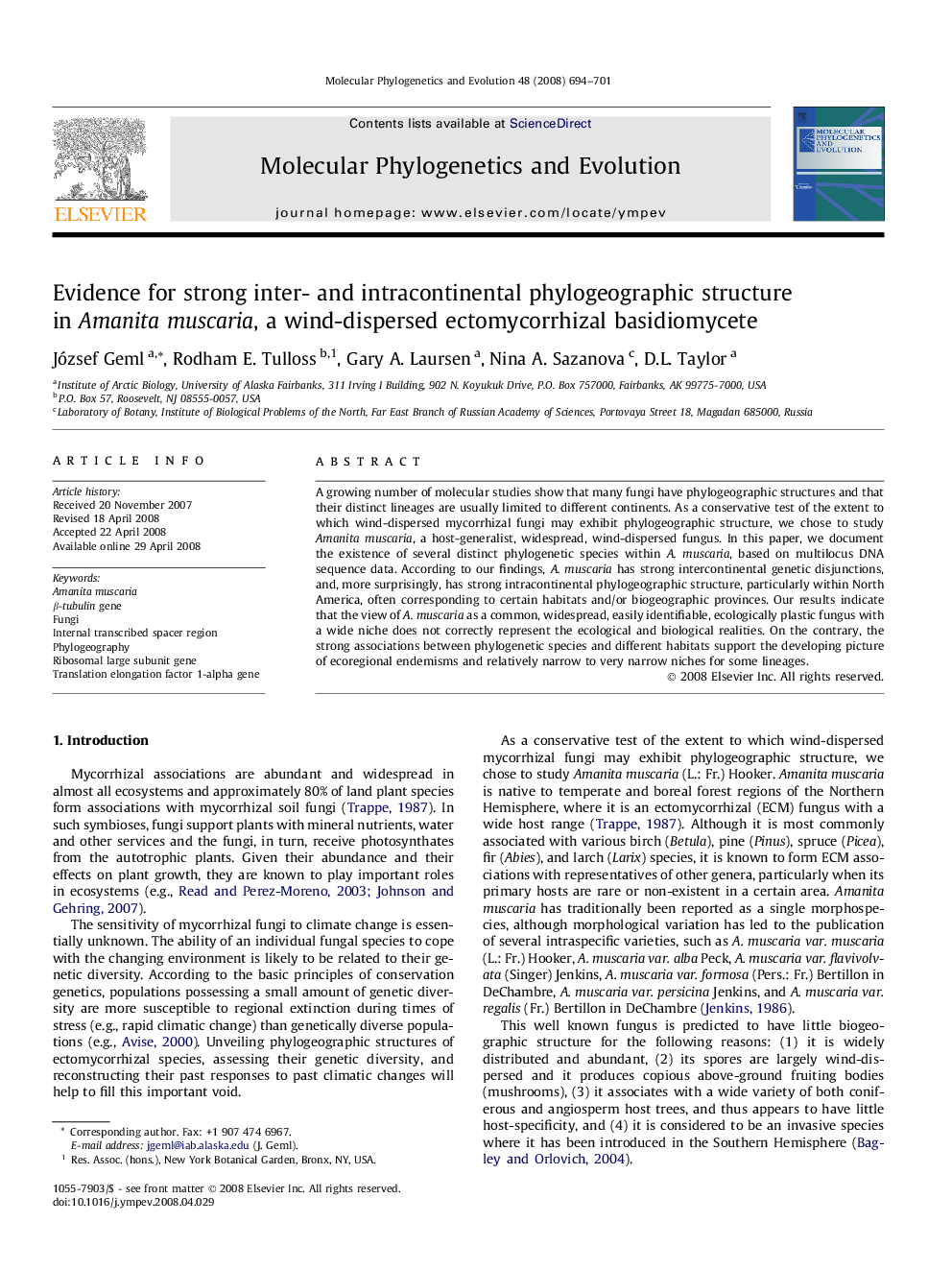| Article ID | Journal | Published Year | Pages | File Type |
|---|---|---|---|---|
| 2835092 | Molecular Phylogenetics and Evolution | 2008 | 8 Pages |
A growing number of molecular studies show that many fungi have phylogeographic structures and that their distinct lineages are usually limited to different continents. As a conservative test of the extent to which wind-dispersed mycorrhizal fungi may exhibit phylogeographic structure, we chose to study Amanita muscaria, a host-generalist, widespread, wind-dispersed fungus. In this paper, we document the existence of several distinct phylogenetic species within A. muscaria, based on multilocus DNA sequence data. According to our findings, A. muscaria has strong intercontinental genetic disjunctions, and, more surprisingly, has strong intracontinental phylogeographic structure, particularly within North America, often corresponding to certain habitats and/or biogeographic provinces. Our results indicate that the view of A. muscaria as a common, widespread, easily identifiable, ecologically plastic fungus with a wide niche does not correctly represent the ecological and biological realities. On the contrary, the strong associations between phylogenetic species and different habitats support the developing picture of ecoregional endemisms and relatively narrow to very narrow niches for some lineages.
